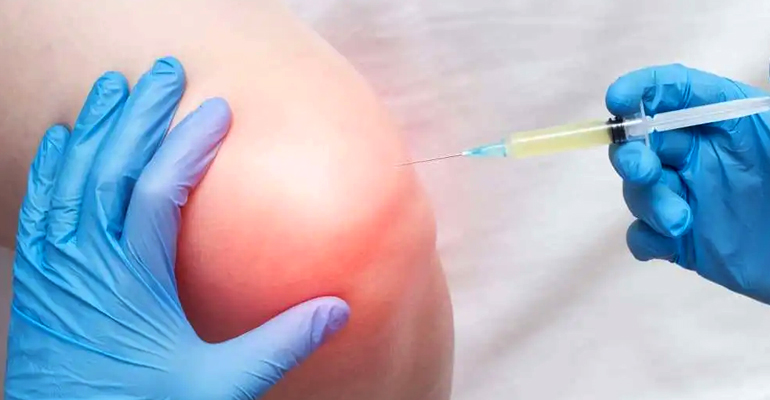-
-
+91-8591556577
-
Intra Articular Knee Injections

Intra Articular Knee Injections
Intra-articular knee injections are minimally invasive procedures that involve injecting medication directly into the knee joint. These injections are commonly used to relieve pain and inflammation associated with various knee conditions, such as osteoarthritis, rheumatoid arthritis, and other inflammatory joint disorders.
Indications for Intra-Articular Knee Injections
Intra-articular knee injections may be recommended for several reasons, including:
- Osteoarthritis: To reduce pain and inflammation caused by degenerative changes in the knee joint.
- Rheumatoid Arthritis: To manage inflammation and pain associated with autoimmune conditions.
- Bursitis or Tendonitis: To relieve localized pain and inflammation in the knee.
- Meniscus Injuries: To provide pain relief in cases of meniscal tears or other injuries.
Types of Intra-Articular Knee Injections
- Corticosteroid Injections: These injections deliver powerful anti-inflammatory medications that can quickly reduce swelling and pain in the knee joint. They are often used for short-term relief.
- Hyaluronic Acid Injections: Hyaluronic acid is a natural substance found in joint fluid. Injections of hyaluronic acid can help lubricate the joint, reduce friction, and provide pain relief, especially for patients with osteoarthritis.
- Platelet-Rich Plasma (PRP) Injections: PRP therapy involves injecting a concentration of platelets derived from the patient's blood into the knee joint. This can promote healing and reduce inflammation.
- Stem Cell Injections: In some cases, stem cells may be injected into the knee joint to help repair damaged tissue and promote healing.
The Intra-Articular Knee Injection Procedure
The procedure for intra-articular knee injections typically involves the following steps:
- Preparation: The patient is positioned comfortably, and the knee is exposed.
- Cleansing the Area: The skin over the injection site is cleaned with an antiseptic solution to minimize the risk of infection.
- Local Anesthesia: A local anesthetic may be administered to numb the skin and surrounding tissues at the injection site, although it is not always necessary.
- Injection: A thin needle is carefully inserted into the knee joint space. The physician then injects the medication (corticosteroid, hyaluronic acid, PRP, or stem cells) directly into the joint.
- Monitoring: The patient is monitored for a short period after the injection to assess for any immediate reactions.
Recovery and Aftercare
After an intra-articular knee injection, most patients can return to their normal activities relatively quickly. Some may experience:
- Temporary Discomfort: Mild pain or swelling at the injection site is common and can usually be managed with ice and over-the-counter pain relievers.
- Activity Restrictions: Patients may be advised to avoid strenuous activities or excessive weight-bearing for a short period following the injection.
- Follow-Up: A follow-up appointment may be scheduled to evaluate the effectiveness of the injection and discuss further treatment options if necessary.
Benefits of Intra-Articular Knee Injections
- Pain Relief: Many patients experience significant relief from knee pain and improved function following the injection.
- Minimally Invasive: The procedure is performed in an outpatient setting with minimal recovery time compared to surgical interventions.
- Targeted Treatment: Injections provide targeted relief directly to the affected joint, which can result in quicker and more effective outcomes.
- Potential for Long-Lasting Effects: Depending on the type of injection and individual response, some patients may enjoy prolonged relief from symptoms.
Risks and Considerations
While intra-articular knee injections are generally safe, there are some potential risks, including:
- Infection: There is a small risk of infection at the injection site.
- Bleeding: Rarely, bleeding may occur in the joint space.
- Allergic Reactions: Some patients may experience allergic reactions to the injected medication.
- Temporary Pain Increase: Some individuals may experience increased pain or swelling after the injection, which typically resolves within a few days.
